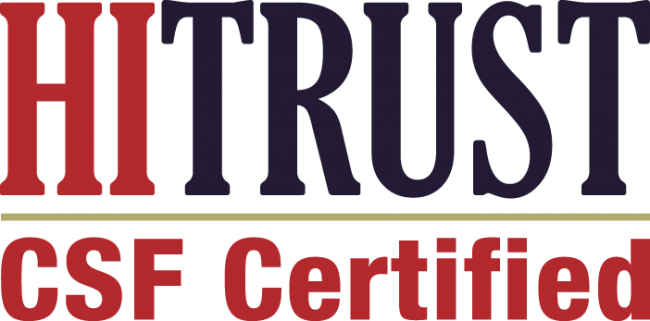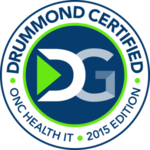In today’s hyper-connected business landscape, referral marketing has emerged as one of the most powerful customer acquisition channels. Yet many organizations still struggle with a critical weakness: referral silos. When your referral program operates in disconnected channels with inconsistent experiences, you’re leaving significant revenue on the table.
The Power of Referral Marketing: Why It Matters
Before we dive into solving silos, let’s understand what’s at stake. The statistics around referral marketing are nothing short of remarkable:
Trust in recommendations from friends and family outpaces any other advertising form, with 92% of consumers placing their confidence in such endorsements. This trust translates directly into business results. Referral marketing delivers conversion rates that are three to five times higher than any other marketing channel, making it an unparalleled tool for growth.
The financial impact is equally compelling. Referred customers demonstrate 16% higher lifetime value, and referral-driven purchases show 30% higher average order values compared to non-referred customers. Perhaps most impressively, customer acquisition costs decrease by 13% when referral marketing is implemented correctly.
Yet here’s the sobering reality: while 83% of consumers are willing to refer a brand, only 29% actually do. This massive gap between intent and action often stems from one critical issue—disconnected, siloed referral experiences.
Understanding Referral Silos: The Hidden Revenue Killer
Referral silos occur when different channels and touchpoints in your referral program operate independently, creating fragmented experiences for both referrers and their friends. These silos manifest in several ways:
Channel Silos: Your email referral program doesn’t connect with your in-store experience. A customer receives a referral offer via email but can’t redeem it when they visit your physical location.
Data Silos: Marketing has one set of referral data, sales has another, and customer service can’t see either. This creates blind spots and missed opportunities.
Technology Silos: Your mobile app, website, and point-of-sale systems don’t communicate, forcing customers to start over when switching channels.
Organizational Silos: Different departments manage different aspects of the referral program without coordination, leading to inconsistent messaging and confusing customer experiences.
Research shows that approximately 80% of businesses experience consumer churn when customers aren’t provided with a satisfactory experience. When your referral program creates friction instead of flow, you’re actively driving customers away.
The Omnichannel Imperative: Why Seamless Matters
The concept of omnichannel has transformed from buzzword to business necessity. Companies investing in omnichannel experiences surged from 20% to over 80%, and for good reason.
Omnichannel customers prove more valuable to businesses, spending about 4% more when shopping in stores and 10% more while shopping online. For referral programs specifically, using three or more channels within a campaign drives order rates to 494% compared with single-channel campaigns.
Consider the modern customer journey: 60% of people online start shopping on one device but continue or finish on a different one. Your referral opportunity needs to follow them seamlessly across that journey. Someone might discover your referral program in-store, email the link to themselves, open it on their laptop at home, and share it via social media. Any friction in this chain breaks the referral flow.
The Multi-Channel Referral Framework: Building Your System
Creating a seamless multi-channel referral system requires strategic thinking across four key dimensions:
1. Unified Customer Data Architecture
Your foundation must be a centralized customer data hub that connects all channels and touchpoints. This means:
- Single Customer View: Every interaction, whether online or offline, feeds into one comprehensive customer profile
- Real-Time Synchronization: When a customer shares a referral link via email, that action immediately appears in your CRM, mobile app, and point-of-sale system
- Cross-Channel Tracking: You can follow a referral from initial share through conversion, regardless of which channels were involved
The payoff is significant. When referral data flows freely across your organization, you can identify your top advocates, understand which channels drive the most valuable referrals, and personalize the experience based on complete customer history.
2. Consistent Cross-Channel Experience Design
Nearly 80% of consumers prefer omnichannel strategies due to a seamless communication experience. To deliver this, you need:
- Visual Consistency: Use the same branding, imagery, and design language across all referral touchpoints
- Message Alignment: Your value proposition and incentive structure should be identical whether someone encounters it via email, app notification, or in-store signage
- Progressive Disclosure: Allow customers to start the referral process on one channel and complete it on another without losing context
One effective approach is the referral card strategy. Referral cards can be sent via emails, printed on receipts in brick-and-mortar stores, or scanned at checkouts, creating a physical-to-digital bridge that maintains consistency.
3. Strategic Channel Integration
Different channels serve different purposes in the referral journey. The key is orchestrating them together:
Email: Ideal for detailed explanations, personalized incentives, and tracking. 30% of shares come directly from emails, highlighting the importance of ongoing member engagement.
Mobile Apps: Perfect for immediate, location-based prompts. 45% of employee referrals come from mobile devices, demonstrating mobile’s critical role.
Social Media: Expands reach exponentially. Allow easy sharing across multiple platforms with pre-populated messages that maintain your brand voice.
In-Store: Capitalizes on the excitement of physical purchases. 84% of smartphone shoppers use their phones while at physical store locations, creating opportunities for immediate digital referral capture.
Website: Serves as the central hub where all channels can direct users for comprehensive program information and tracking.
4. Technology Stack Integration
Breaking down silos requires the right technology foundation:
- Referral Marketing Platform: Invest in software that natively supports multi-channel tracking and attribution
- CRM Integration: Ensure your referral data flows into your customer relationship management system
- Marketing Automation: Connect referral triggers to your automated communication workflows
- Analytics Platform: Consolidate data from all channels for holistic performance visibility
The referral market is estimated to reach USD 7.24 Billion by 2031, growing at a CAGR of 19.5% from 2024 to 2031, driving increased investment in sophisticated referral technology solutions.
Measuring Success: Key Performance Indicators
The global average referral rate sits at 2.35%, with top performers reaching 22.25%. To bridge this gap, track these critical metrics:
Share Rate: Target a share rate of 5-9%, showing how many customers actively refer others.
Reach Efficiency: 13 people reached for every share demonstrates the impact of online share methods.
Conversion Excellence: Target conversion rates of 2-3 times your regular e-commerce rate.
Cross-Channel Attribution: Track which channel combinations drive the highest conversion rates and lifetime value.
Real-World Success: Learning from Leaders
Several companies have mastered the omnichannel referral approach:
Dropbox provides the classic case study. Their storage referral offer led to 3,900% growth in 15 months by making referrals seamlessly available across web, mobile, and desktop applications.
Acorns takes an integrated approach, embedding referral opportunities in every email footer while also promoting through Twitter and push notifications. By maintaining consistency across channels while optimizing for each platform’s strengths, they’ve created a referral engine that drives sustainable growth.
Starbucks demonstrates physical-digital integration excellence. Their app serves as the central hub, but the experience extends seamlessly to in-store interactions, social media, and email, all while maintaining a unified rewards and referral program.
Implementation Roadmap: Your Action Plan
Breaking down referral silos doesn’t happen overnight, but this phased approach will get you there:
Phase 1: Audit and Assessment (Weeks 1-4)
- Map all current referral touchpoints and channels
- Identify data silos and integration gaps
- Interview customers about their referral experience
- Benchmark your current metrics against industry standards
Phase 2: Foundation Building (Weeks 5-12)
- Implement a centralized customer data platform
- Select and deploy an omnichannel referral marketing platform
- Create consistent visual and messaging guidelines
- Establish cross-functional governance for the referral program
Phase 3: Channel Integration (Weeks 13-24)
- Connect all digital channels to your central platform
- Implement tracking across the full customer journey
- Launch pilot programs in high-priority channel combinations
- Train teams across departments on the unified system
Phase 4: Optimization and Scale (Ongoing)
- Analyze cross-channel attribution data
- Test new channel combinations
- Personalize experiences based on customer preferences
- Continuously iterate based on performance data
Overcoming Common Obstacles
Organizational Resistance: Different departments may resist giving up control of their channels. Combat this by demonstrating how a unified approach benefits everyone through improved metrics and easier management.
Technology Complexity: Integration can feel overwhelming. Start with connecting your two highest-impact channels, prove the value, then expand systematically.
Budget Constraints: Referrals are 5 times more likely to convert than leads from other marketing methods, making the investment in proper infrastructure highly cost-effective over time.
Data Privacy Concerns: Build privacy and consent management into your system from the start, ensuring compliance while maintaining seamless experiences.
The Future of Referral Marketing
In 2025, more referral programmes will adopt technologies such as AI and blockchain, implementing sophisticated incentive structures to personalise rewards. The organizations that break down silos now will be positioned to leverage these emerging capabilities.
The trend toward experiential rewards and gamification will require even tighter cross-channel integration. Customers will expect their referral achievements and rewards to follow them seamlessly across every interaction with your brand.
HealthViewX: Purpose-Built for Seamless Referral Management
While the principles discussed in this blog apply across industries, healthcare organizations face unique referral challenges that demand specialized solutions. HealthViewX Referral Management Platform exemplifies how purpose-built technology can break down referral silos and create truly seamless multi-channel systems.
HealthViewX captures, consolidates, views, and tracks referrals from multiple sources, including fax, web, emails, phone, and walk-ins, in one single queue for processing, eliminating the channel silos that plague traditional referral systems. This multi-channel consolidation ensures no referral is missed, regardless of how it arrives.
The platform delivers measurable results that demonstrate the power of breaking down silos. Healthcare organizations using HealthViewX have experienced a 67% reduction in referral processing time, a 45% increase in referral loop closures, and a 40% reduction in patient referral leakage. These improvements directly address the cost of siloed systems discussed throughout this blog.
What makes HealthViewX particularly effective is its approach to the four key dimensions outlined in our multi-channel framework. The platform provides unified customer data through bi-directional EMR integration, ensures consistent experiences through automated workflows and customizable interfaces, integrates strategically across digital and physical channels, and offers real-time tracking with intuitive dashboards that provide visibility across the entire referral journey.
Whether you’re in healthcare, retail, financial services, or any industry that relies on referrals, the principles remain the same: break down silos, integrate channels, unify data, and create frictionless experiences. The organizations that execute this vision will capture the exponential growth that seamless referral systems make possible.
Conclusion: The Competitive Advantage of Seamless Referrals
Referral silos aren’t just an operational inconvenience, they’re a competitive disadvantage. In a world where referred customers spend 25% more on their initial purchase compared to non-referred customers, every friction point in your referral experience represents lost revenue.
The good news? The technology, frameworks, and best practices for creating seamless multi-channel referral systems are available today. What’s required is commitment to breaking down internal silos, investing in integration, and maintaining a relentless focus on the customer experience.
Companies that master omnichannel referrals won’t just see incremental improvements—they’ll unlock exponential growth through the most powerful marketing force available: the authentic recommendations of satisfied customers, delivered seamlessly wherever and whenever the moment is right.
The question isn’t whether you can afford to build a seamless multi-channel referral system. It’s whether you can afford not to.








